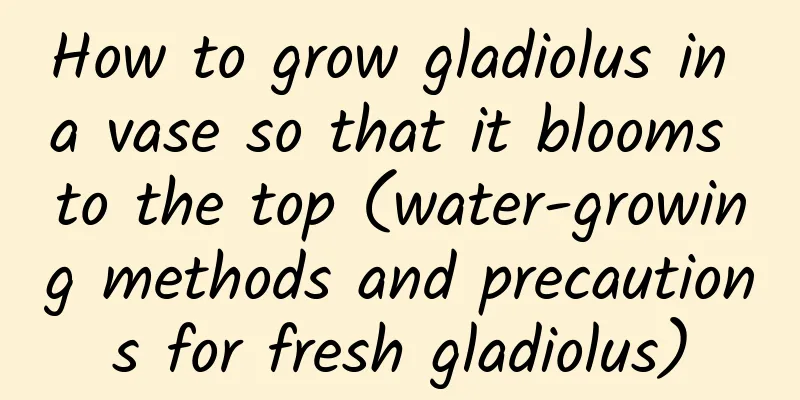Flowers also change their faces. These flowers are masters of color change

honeysuckleSpeaking of honeysuckle, you probably think of flowers that are both golden and silver. In fact, honeysuckle plants often have white and yellow flowers. However, the flowers of honeysuckle are not like this at the beginning. When honeysuckle blooms, white flowers will bloom first. It will turn yellow in a few days. Of course, this process is also gradual. You will find that a branch of honeysuckle often has white and yellow flowers. The reason why honeysuckle changes color is actually for reproduction. The flowers that turn yellow are actually old flowers of a certain age and can be pollinated, so honeysuckle will change color to attract bees for pollination. WeigelaWeigela is also an expert at changing color among flowers. Because the flowers bloom at different times, the branches of Weigela are always colorful, just like a beautiful weigela. Weigela first blooms white flowers in the early stages of flowering. Then it gradually turned pink. Then it turns purple, Usually a branch of Weigela is composed of flowers of various colors, which is extremely beautiful. HydrangeaThe process from hydrangea buds to flowering is a gradual one. Hydrangeas slowly bloom from closed buds. No matter what color they finally become, they will gradually change from green. When the entire large flower ball is fully unfolded, the hydrangea flowers will have their final color. However, hydrangeas sometimes bloom blue flowers and sometimes red flowers. This is mainly controlled by the pigments contained in the hydrangeas themselves. In addition, you can also control the light and salinity of the soil to make the hydrangeas bloom the color you want. QuisqualisWhen the Quisqualis chinensis blooms, its colors change to white, pink, red and purple, and usually the color change is completed within one day, so some people call it - changing colors three times a day. When the flowers of the quince plant first bloom, they are white. The next day it will turn pink. Then it turned red again. Finally the color will turn purple. Just like a chameleon, very interesting. Two-color jasmineBicolor jasmine is also called mandarin duck jasmine. If you grow a pot of bicolor jasmine, it is obvious that the plant will have flowers of both white and purple colors. In fact, when the bicolor jasmine first blooms, its color is lavender. Then it turns bluish white and gradually turns white. The color change of bicolor jasmine is actually related to many factors such as light and temperature. When the flower first blooms, it is purple because of the pigment. After the pigment disappears, it turns white. However, because the flowering time on the same plant is different, the phenomenon of two-color flowers blooming at the same time will occur. |
<<: The difference between Datura and Okra
>>: Why do sunflowers face the sun?
Recommend
How to water the Black Mage
Watering Methods During the Growing Season Black ...
Who still buys flowers nowadays? You can plant a big garden by picking up some leftovers!
1. Radish 1. Choose healthy and fresh radishes, e...
How to plant broad bean seeds
1. Seed selection The most important factor in wh...
How to propagate money tree by cuttings
1. Cutting time The leaves of the money tree can ...
Cultivation method of Fritillaria cirrhosa
1. Soil Fritillaria cirrhosa is suitable for grow...
What to do if the chicken feather vegetable grows too long
What does it look like when chicken feather veget...
What flowers are suitable for growing on the balcony
1. Herbal Plant Recommendations Clivia The most a...
Phalaenopsis price, Phalaenopsis pictures
1. Phalaenopsis price The price of Phalaenopsis o...
How to grow Panax notoginseng
1. Lighting When caring for Panax notoginseng flo...
The causes and treatment methods of black stems of roses
Black rod phenomenon There are generally two type...
How to prune potted bougainvillea and how to shape its branches and leaves
Pruning time for potted bougainvillea The pruning...
Is sudden laughter poisonous?
Regarding the question of whether the Smilax glab...
What medicinal herbs are most profitable to grow in Guangdong? What precious medicinal herbs are suitable to grow in Guangdong?
Guangdong is one of the important provinces in my...
The best time to repot Lithops: pay attention to the time of root pruning, watering and sun exposure
The right time to repot lithops Lithops can be re...
The newly bought flowers have grown into this horrible state. The difference is so big that I want to throw them away every minute!
Sellers' Show vs Buyers' Show 1. Gagaku D...









